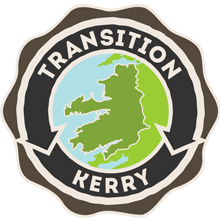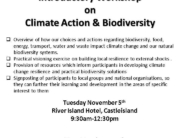WHILE the reopening of the Austrian/Hungarian border in 1989 heralded the collapse of the Iron Curtain, it also also escalated a catastrophic economic situation that was facing the Austrian border district and town of Gussing.
Gussing in the Burgenland region of south-east Austria was one of the country’s poorest regions with little infrastructure. It had no highways or railway lines and depended on imported fossil fuels to meet its energy needs. This Austrian backwater was very much an afterthought for Austrian governments when it came to planning before the ’90s because of its location on the periphery of Western Europe.
Locally, most people commuted to Vienna for work (a distance of approximately 175km) and the migration of young people from the district during the early 90s became an issue that required affirmative action.
In the mid 90s a local group proposed a radical plan to curb the annual outflow of approximately €6m from the region to meet its energy needs by instead exploiting the 45 percent of regional land that was covered in largely unused forest. This plan called for the substituting energy produced from fossil fuels such as oil, coal and gas with energy derived primarily from locally grown biomass and selling this energy directly to the local residents.
Gussing has since become the first EU community to produce its whole energy demand.
In the intervening years the success of the plan can be attributed to having the right people were in the right place at the right time. A forward looking mayor Peter Vadasz, elected soon after the fall of the Iron Curtain fall, appointed Reinhard Koch, an electrical engineer and Gussing native, to assess how the town could make use from its natural resources.
With EU help the European Centre for Renewable Energy Gussing was established and an action plan was initially implemented in the town of Gussing before being rolled out across the district.
The first step was to look at the energy efficiency of public buildings in the town and to stop their use of fossil fuels. By improving their energy efficiency, energy expenditure was reduced by 50 percent.
The next stage was the development of a biomass energy plant that provided heating for 27 houses. Next a facility to convert rapeseed into car fuel was built. And in 1998 with momentum building Viennese scientist Hermann Hofbauer was invited to pilot his work in wood gasification by building a facility in the town. The gas fuels produced in the process of gasification fuel a Jenbacher engine which in turn produces electricity and the by-product heat is used to produce warm water for the district heating system.
As a result of its forward thinking in recent years Gussing became a magnet for scientists and companies – not just from Austria – looking to make their mark in the field of renewable energy development.
From initially heating the town the Green Energy Revolution spread throughout the district and within years emigration became immigration and today ECRE Güssing International AG consults with towns and regions across the world on how they too can develop sustainable independent energy policies.
It should be noted the Gussing Project or Gussing Model was driven not not by an ambition to make Gussing “Green” but out of desperation to save the district’s economy. The Project received funding of just over €300m from the EU which has enabled the Gussing district to get its:
· Entire heating requirement from biomass;
· Produce 150 percent of its bio-diesel needs from agriculture and
· 250 percent of its electricity needs from biomass and solar energy.
Thirty-five decentralized power plants within the Güssing district now serve a population of about the 27,000 people and there is an energy turnover of about €14m pa. The region has stable energy prices that are not affected by international gas or oil markets. And according to 2009 figures, over 50 companies working directly and indirectly in the energy field have created over 1000 new jobs, many of which require specialist skills.
As for the infrastructure, the access roads are much improved as according to ECRE Güssing International AG 1,700 eco-tourists visit the district every week to learn more about the Gussing Project.
Gussing district’s main power plant is the Gussing-based 2MW electric power and 4.5 MW thermic wood gas generator power plant (See pics) which was completed in 2001. This produces heat, electricity, hydrogen, natural gas and fuel all from wood chip.
In addition, the nearby town of Strem has a 0.5 MW electric power/0.5 MW thermic biomass gasification power plant that uses locally produced silage to supply enough electricity and heat for the village’s population of 500 people.






Leave A Comment